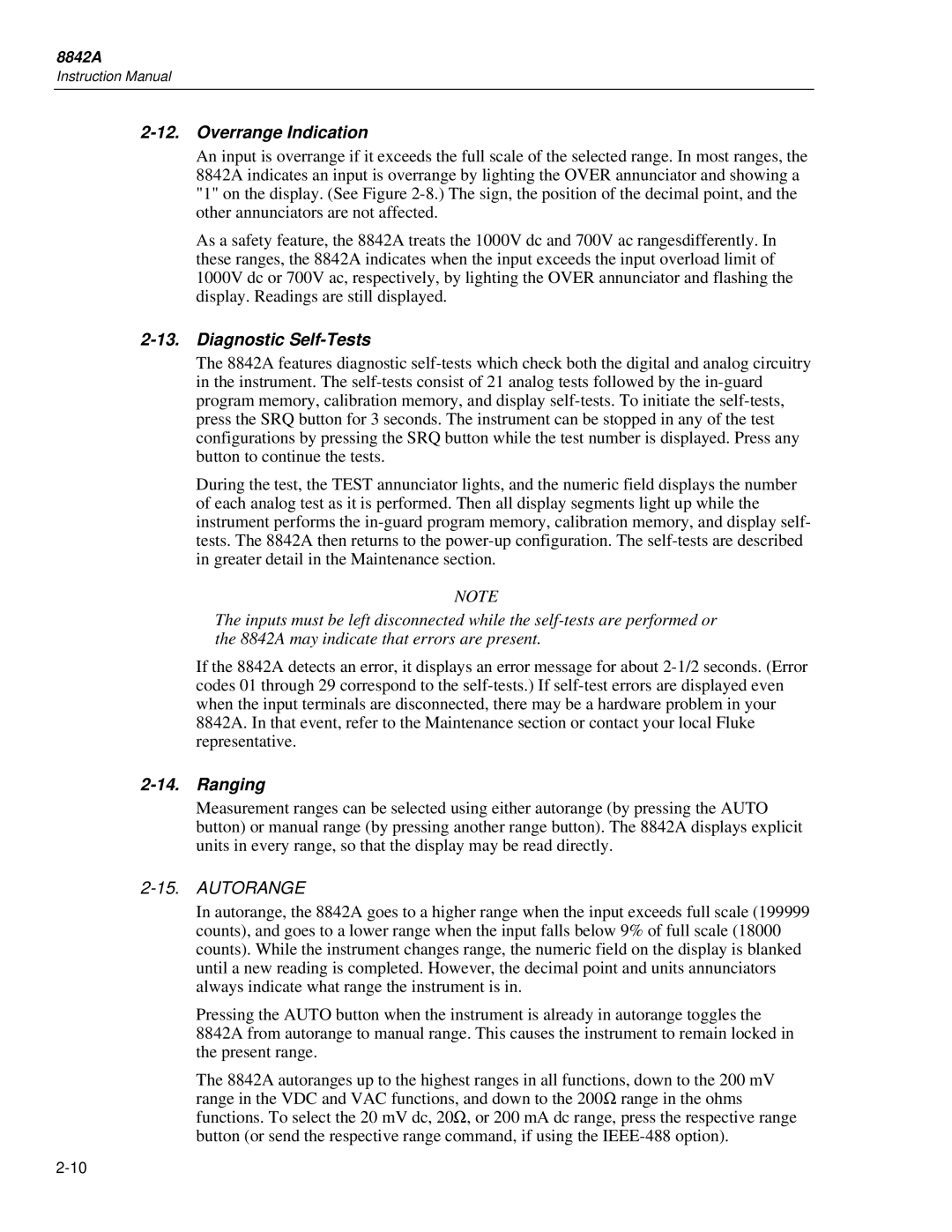8842A
Instruction Manual
2-12. Overrange Indication
An input is overrange if it exceeds the full scale of the selected range. In most ranges, the 8842A indicates an input is overrange by lighting the OVER annunciator and showing a "1" on the display. (See Figure
As a safety feature, the 8842A treats the 1000V dc and 700V ac rangesdifferently. In these ranges, the 8842A indicates when the input exceeds the input overload limit of 1000V dc or 700V ac, respectively, by lighting the OVER annunciator and flashing the display. Readings are still displayed.
2-13. Diagnostic Self-Tests
The 8842A features diagnostic
During the test, the TEST annunciator lights, and the numeric field displays the number of each analog test as it is performed. Then all display segments light up while the instrument performs the
NOTE
The inputs must be left disconnected while the
If the 8842A detects an error, it displays an error message for about
2-14. Ranging
Measurement ranges can be selected using either autorange (by pressing the AUTO button) or manual range (by pressing another range button). The 8842A displays explicit units in every range, so that the display may be read directly.
2-15. AUTORANGE
In autorange, the 8842A goes to a higher range when the input exceeds full scale (199999 counts), and goes to a lower range when the input falls below 9% of full scale (18000 counts). While the instrument changes range, the numeric field on the display is blanked until a new reading is completed. However, the decimal point and units annunciators always indicate what range the instrument is in.
Pressing the AUTO button when the instrument is already in autorange toggles the 8842A from autorange to manual range. This causes the instrument to remain locked in the present range.
The 8842A autoranges up to the highest ranges in all functions, down to the 200 mV range in the VDC and VAC functions, and down to the 200Ω range in the ohms functions. To select the 20 mV dc, 20Ω, or 200 mA dc range, press the respective range button (or send the respective range command, if using the
